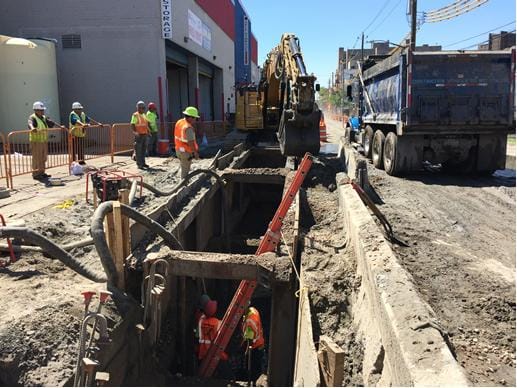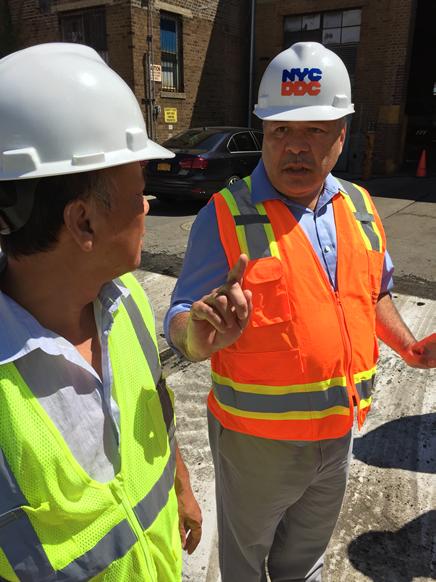New Sewers Bring Much Needed Drainage To Coney Island


A project to expand storm sewers and increase drainage capacity in Coney Island — a neighborhood hard hit by Superstorm Sandy — is on track to be completed by March, two months ahead schedule.
The $27.7 million project on parts of West 21st Street and Mermaid Avenue began in May 2015 and is being managed by the New York City Department of Design and Construction (DDC) for the New York City Department of Environmental Protection (DEP).

“Expanding storm sewer capacity in flood-prone areas supports Mayor de Blasio’s goals to make our City stronger and more resilient,” said DDC Commissioner Feniosky Peña-Mora. “The proximity of the site to the ocean makes it challenging to install large sewers in the area, but the project has progressed well. We look forward to working with our partners at DEP on further drainage measures.”
The project brings significantly larger storm sewers to West 21st Street between Neptune and Surf Avenues, and Mermaid Avenue between West 21st and West 24th Streets, replacing an existing 42 inch diameter storm sewer with new concrete “box” sewers up to 9.5 feet wide and 3 feet high. The new storm sewers have over 350 percent the drainage capacity of the ones being replaced.
Almost a mile of water mains are also being replaced, including many that were installed in the 1890’s. New sanitary sewers are also being installed, and streets, curbs and sidewalks reconstructed.
“In order to support the weight of the concrete storm sewers, piles were driven into the roadway to a depth of 50 feet,” said DDC Engineer-in Charge Jatin Upadhyay, who is supervising the project. “Otherwise, because of the high water table in the neighborhood, the sewers would sink down further into the ground. This required a lot of coordination with Con Edison and other utilities so we could both make space under the street for the larger sewers, and also operate pile driving equipment safely in an area with overhead power lines.”



